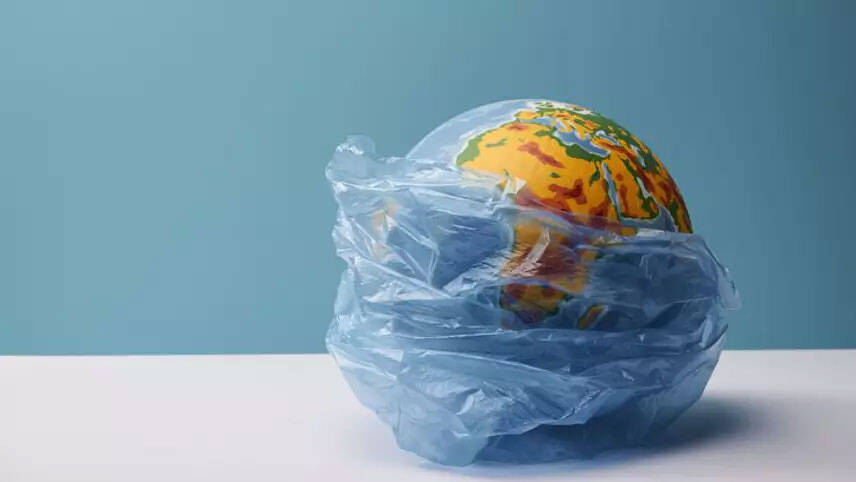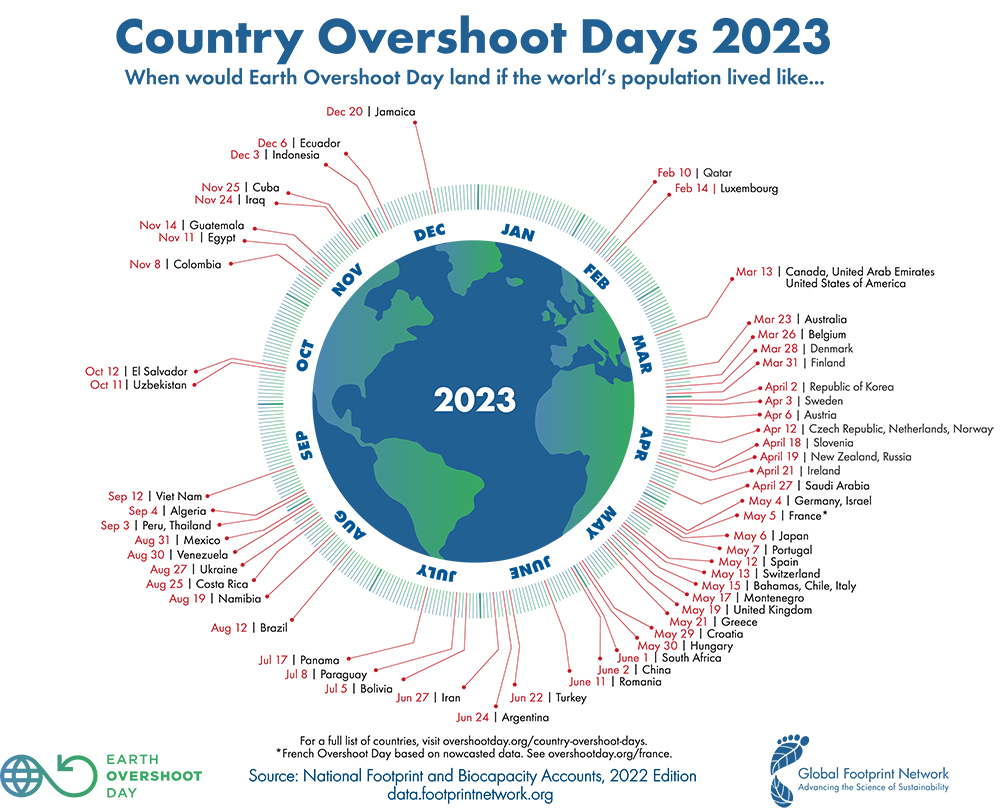Register for free and continue reading
Join our growing army of changemakers and get unlimited access to our premium content

Humanity has officially used a whole year’s worth of resources since the year began. Our current levels of resource extraction and consumption are unsustainable, putting a strain on waste management systems which in turn impacts public health and wellbeing.
The global extraction and use of natural resources has been unsustainable for more than five decades here, but there are signs that things can get better, with this year’s Earth Overshoot Day falling five days later than last year’s.
This explainer from edie explores why the date has changed. It also answers other frequently asked questions on the full extent of humanity’s overconsumption; the growth of recycling and reuse systems; and, crucially, some of the solutions which can speed the transition from an extractive linear economy to a more circular, sustainable economic systems.
What is Earth Overshoot Day?
Earth Overshoot Day is marked annually. It is a date when humanity’s ecological demand exceeds the Earth’s capacity to regenerate its resources for that year. It represents the point at which we start living beyond the planet’s ecological means. Earth Overshoot Day is hosted and calculated by the Global Footprint Network, an international research organisation.
To calculate Earth Overshoot Day, the Global Footprint Network evaluates two critical factors: the planet’s biocapacity and humanity’s ecological footprint. Biocapacity refers to the Earth’s ability to produce renewable resources and absorb waste, while the ecological footprint quantifies human demand on nature, including consumption of resources and emissions.
The calculation involves dividing the planet’s biocapacity by humanity’s Ecological Footprint and then multiplying the result by 365 (the number of days in a year). The remainder represents the number of days when we exceed the Earth’s capacity, leading to resource depletion and ecological damage.
How has the date been moving?
The Earth Overshoot Day date has been consistently moving earlier each year due to increasing ecological overshoot.
From 25 December 1970, the Earth Overshoot Day has moved to 2 August 2023, highlighting a steady increase in humanity’s Ecological Footprint and a decline in Earth’s biocapacity.
The Overshoot Day in 2022 was the earliest yet, on 28 July. A pushback to 16 August in 2020 was temporary, influenced by pandemic-induced lockdowns.
Global Ecological Footprint and biocapacity metrics are recalculated annually using the latest data and accounting methodology. Analysing the overall trend of the date progression is crucial, rather than focusing on individual years.
While the date has been advancing on the calendar every year, the rate of advancement has been slowing down in more recent years.
How much stuff are we using and wasting?
Dutch consultancy Circle Economy publishes statistics early every year on global resource extraction and rates of reuse and recycling. It does so through its Circularity Gap Report.
Extraction has been plateauing around the 100 billion tonnes mark for several years now. This figure includes all raw materials. It is forecasting that, without dramatic change now, extraction will increase to 170 billion tonnes by 2050.
Rates of reuse and recycling have, worryingly, decreased. Circle Economy tracked a 7.2% reuse and recycling rate for its latest report, down from 9.1% in 2018.
To keep the Paris Agreement on climate change alive, Circle Economy believes that material extraction will need to decrease by at least 30%. Recycling and reuse rates will also need to significantly increase.
Key waste sources identified by Circle Economy include building materials, fossil fuels, food and fast-moving consumer goods including electrical goods and fashion.
Which countries are the worst offenders?
Some countries are already using natural resources at sustainable levels and, if the whole world followed their example, Earth Overshoot Day would fall far later.
This cohort consists mainly of developing and emerging nations in the Global South. Jamaica’s date is 20 December, Indonesia’s is 3 December and Cuba’s is 25 November.
At the other end of the scale are Qatar and Luxembourg, which have dates in February. Other major offenders, marking their date before the end of March, are Canada, the USA, the UAE, Australia, Belgium, Denmark and Finland. edie’s home in the UK passed overshoot on 19 May.
Big questions about transitioning to a circular economy in a socially just way are being asked. Those in wealthy nations do not want to take actions that will reduce their quality of life as well as their waste levels. But those in developing nations are dealing with waste imports from these nations, and will need ways of improving quality of life without dramatically increasing consumption.
Why is this a problem for climate and nature?
Earth Overshoot Day is not just a waste problem. Linear systems of consumption fuel climate change.
The Ellen MacArthur Foundation estimates that 45% of global annual emissions are tied to the ‘take-make-dispose’ system for materials. Even if we transitioned the global energy system, reaching net-zero would be impossible without the transition to a more circular economy.
To give just one example, at least one-third of all food produced each year is wasted. This waste, throughout its lifecycle, generates 8-10% of global annual emissions. This is almost three times the share accounted for by aviation.
Also, extracting natural resources for the linear economy often happens at the expense of biodiversity. WWF has recorded an average decline of 69% in species populations since the first Earth Overshoot Day was marked.
According to the Intergovernmental Panel on Climate Change (IPCC), food and drink production has been the driver of 75% of deforestation by area size to date. Other contributors include forestry and mining. In other words, these sectors are direct drivers of biodiversity loss and major contributors to the linear economy.
Disposing of more resources and products than our waste systems can handle also harms nature in the form of litter or pollution from mismanaged waste. National Geographic claimed in 2019 that 700 species are known to have been affected by plastic waste, for example.
What can be done to move the date?
As noted above, it is possible to move the Earth Overshoot date back by reducing raw material use and increasing reuse and recycling rates. This has been achieved this year.
But far more rapid and wide-reaching action will be needed to deliver even more progress – and to make sure that it sticks.
Changing the global economic system to design out waste and pollution will require action from policymakers in international forums and in the form of domestic interventions.
On an international basis, nations can include resource consumption and waste management in their plans for achieving the Paris Climate Agreement – their Nationally Determined Contributions (NDCs). Nations are currently being asked to update their NDCs ahead of COP28 in Dubai this winter. Nations can also press for strong agreements on a just transition away from fossil fuels and on the forthcoming UN plastic treaty.
National and regional examples of policymaking for a circular economy include:
- The EU’s Circular Economy package and Action Plan, which mandate ecodesign and include measures to scale funding for recycling
- Kenya’s ban on plastic bags and Extended Producer Responsibility rules for other plastics
- Amsterdam’s ‘Donut Economics’ approach, which feeds into the Netherlands’ plan to become a fully circular economy by 2050
Delivering policies like these inevitably requires businesses to take action. Legislation can create a more even playing field and force laggards to act, but some firms will naturally move ahead of mandates. edie’s free business guide to the circular economy sets out why and how businesses can get ahead of the curve, including case studies from those already innovating their business models.
Governments and businesses have an immense responsibility here. But individuals taking action collectively can make a difference – especially in countries that have their own overshoot days earlier in the year. Individuals can put pressure on businesses and policymakers while also changing their own habits and working with their communities to make changes the norm.
Habit changes can include:
- Reducing food waste at home. 70% of the UK’s food waste happens at the customer level.
- Ending fossil fuel dependence in daily transport and heating habits.
- Buying durable and reusable products; not buying more than needed and learning to repair.
People in nations with strong circular economies also have a role to play in showcasing their solutions to others and sharing practical advice.
Sarah George and Sidhi Mittal



Please login or Register to leave a comment.